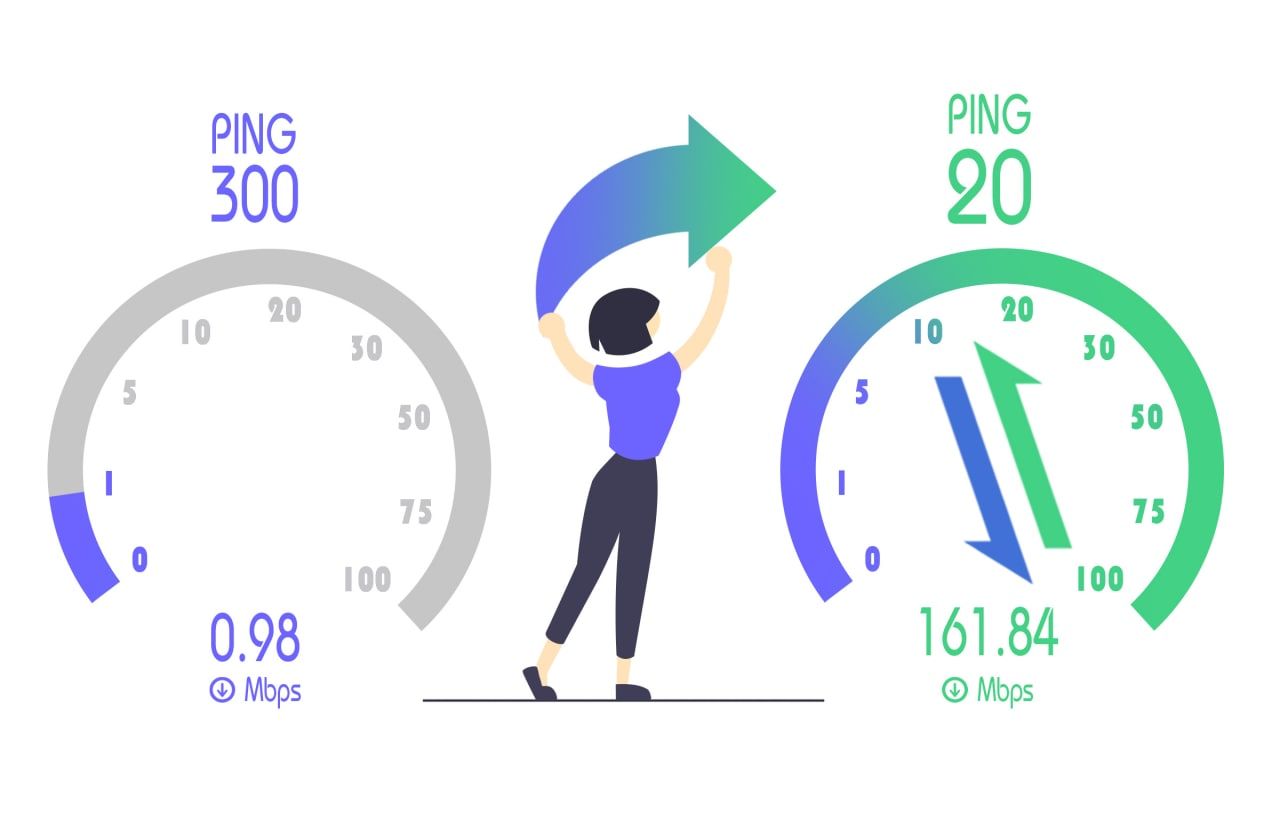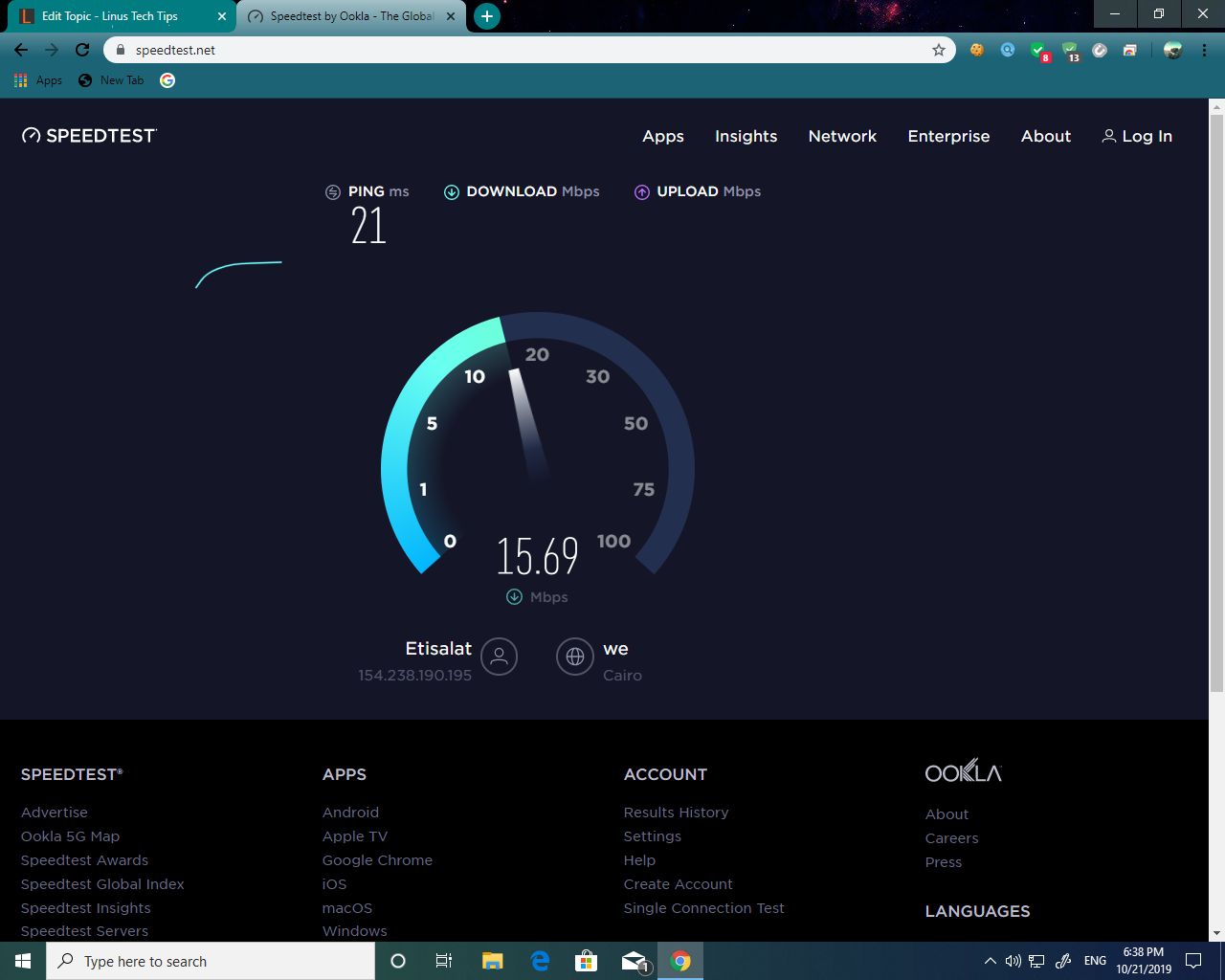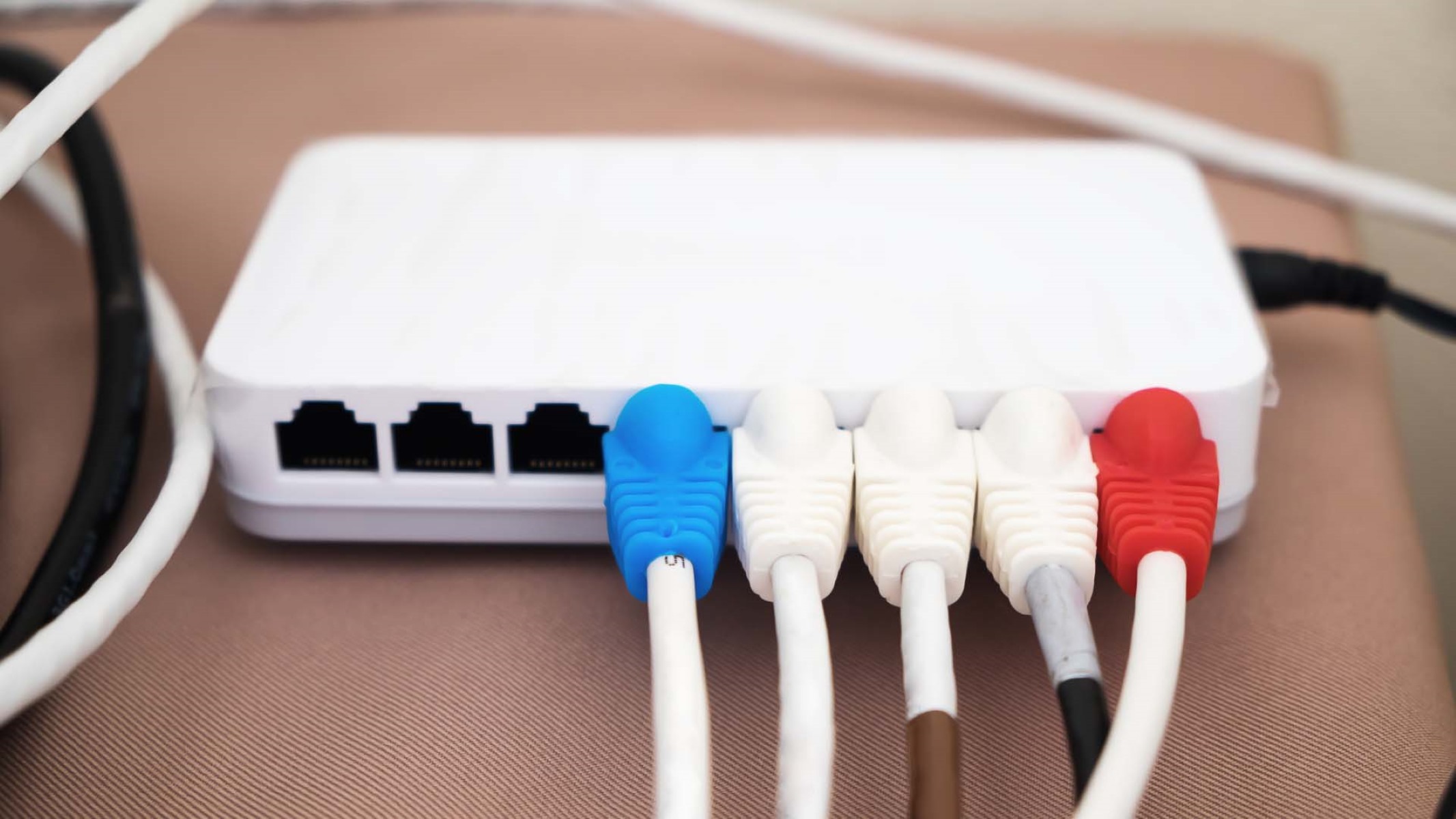Possible Causes of High Ping with Ethernet
The presence of high ping (also known as latency) can be frustrating when using an Ethernet connection. A high ping can result in lag during online gaming, slow loading times for web pages, and overall poor network performance. Several factors can contribute to a high ping with an Ethernet connection. Understanding these possible causes can help you troubleshoot and resolve the issue. Here are some potential culprits:
- 1. Network Congestion: Heavy network traffic can cause latency issues, resulting in a high ping. If multiple devices are connected to your network and are actively using the internet, it can lead to congestion and slower response times.
- 2. Outdated Network Drivers: Outdated or incompatible network drivers can hinder the performance of your Ethernet connection. It is essential to ensure that you have the latest drivers installed for your network adapter to maintain optimal performance.
- 3. Physical Cable Issues: Damaged or faulty Ethernet cables can introduce signal interference and affect the stability of your connection. Examine your cables for any visible signs of wear and tear, such as frayed wires or bent connectors.
- 4. Faulty Ethernet Port: If your computer’s Ethernet port is damaged or malfunctioning, it can lead to a high ping. Test the port by connecting your Ethernet cable to a different port or using a different device to determine if the issue lies with the port itself.
- 5. Router Configuration Problems: Incorrect router settings or misconfigured Quality of Service (QoS) settings can impact network performance and contribute to high ping. It’s worth checking your router’s settings to ensure they are correctly configured.
- 6. Firewall or Antivirus Interference: Overly aggressive firewall or antivirus software can sometimes interfere with network connections, causing latency issues. Temporarily disabling these software programs can help determine if they are causing the high ping problem.
- 7. Bandwidth Limitations: If your internet service provider (ISP) imposes bandwidth restrictions or if there are other devices on your network consuming a significant amount of bandwidth, it can result in a high ping.
Identifying the possible causes of high ping with Ethernet is the first step towards troubleshooting and resolving the issue. In the next section, we will discuss the steps you can take to address these issues and improve your network performance.
Network Congestion
Network congestion is a common cause of high ping with Ethernet connections. When there is heavy traffic on the network, such as multiple devices streaming videos, downloading large files, or playing online games simultaneously, it can result in slower response times and increased latency.
Network congestion typically occurs in shared networks, where multiple devices are connected to the same router or switch. This can include household networks with several computers, smartphones, smart TVs, and other internet-connected devices. It can also happen in office or public networks where multiple users are accessing the network simultaneously.
When network congestion is present, the available bandwidth gets divided among the connected devices, leading to slower internet speeds and increased ping times. This can result in lag and delays when sending and receiving data packets.
To address network congestion, consider the following steps:
- Identify the Source: Determine which devices or applications may be consuming excessive bandwidth on your network. Look for devices with high data usage or programs that are running bandwidth-intensive tasks.
- Manage Bandwidth Usage: If you identify devices or applications that are using an excessive amount of bandwidth, try limiting their access or scheduling their usage during off-peak hours. This can help alleviate congestion and improve network performance.
- Upgrade Internet Plan: If you consistently experience network congestion, consider upgrading your internet plan to a higher speed or one that offers more bandwidth. This will provide a larger capacity to handle multiple devices and simultaneous activities.
- Implement Quality of Service (QoS): QoS is a feature available on many routers that allows you to prioritize certain types of network traffic over others. By assigning higher priority to time-sensitive applications like video streaming or online gaming, you can ensure a smoother experience and reduce ping latency.
- Consider Wired Connection: While Wi-Fi is convenient, it is more susceptible to interference and congestion. Using an Ethernet connection can provide a more stable and reliable connection, which can help reduce network congestion and improve ping times.
By addressing network congestion and optimizing your network usage, you can minimize the occurrence of high ping with Ethernet connections and enhance your overall network performance.
Outdated Network Drivers
Outdated or incompatible network drivers can significantly impact the performance of your Ethernet connection and contribute to high ping. The network driver acts as a bridge between your operating system and the network adapter, facilitating communication between the two.
When network drivers are outdated, they may not be able to properly handle the data transmission, leading to delays and increased latency. It’s crucial to ensure that you have the latest drivers installed to maintain optimal performance and reduce ping times.
To address outdated network drivers, you can follow these steps:
- Identify the Network Adapter: Determine the make and model of your network adapter. This information can typically be found in the Device Manager utility on your computer.
- Check the Manufacturer’s Website: Visit the website of the network adapter manufacturer and look for the support or drivers section. Search for the latest drivers for your specific adapter model.
- Download and Install the Updated Driver: Once you have found the latest driver for your network adapter, download the installation file and run it on your computer. Follow the on-screen instructions to complete the installation process.
- Automatic Driver Update Utilities: Alternatively, you can use automatic driver update utilities, such as Driver Booster or Driver Easy, which can scan your system and automatically install the latest drivers for your network adapter.
- Reboot Your System: After installing the updated driver, restart your computer to ensure that the changes take effect.
Regularly updating your network drivers is essential to maintain a stable and efficient Ethernet connection. It is recommended to check for updates periodically, as new driver versions may be released with bug fixes and performance enhancements.
By keeping your network drivers up to date, you can ensure that your Ethernet connection operates at its best, minimizing ping latency and improving overall network performance.
Physical Cable Issues
Physical cable issues can be a common cause of high ping with Ethernet connections. Damaged or faulty Ethernet cables can introduce signal interference and affect the stability of your connection, leading to increased latency and slower data transmission.
When inspecting your Ethernet cables for potential issues, consider the following factors:
- Visible Damage: Check for any visible signs of damage, such as frayed or torn cables or bent connectors. These physical defects can disrupt the flow of data and result in a high ping.
- Cable Length: Ensure that the Ethernet cable does not exceed the recommended maximum length for your network type. Longer cables can experience signal degradation over distance, leading to higher latency.
- Poor Connections: Make sure that the Ethernet cable is securely connected to both the device and the router or switch. Loose or unstable connections can cause intermittent signal loss and increased ping times.
- Interference: Relocate any Ethernet cables that are running alongside or in close proximity to electrical cables, power adapters, or other sources of electromagnetic interference. Electromagnetic interference can disrupt the signal and impact network performance.
- Use Quality Cables: Invest in high-quality Ethernet cables that meet the appropriate standards for your network speed (e.g., Cat5e, Cat6). Higher-quality cables are less prone to interference and offer better overall performance.
If you suspect that your Ethernet cable is causing high ping issues, consider replacing it with a new one. Be sure to choose a reliable and well-made cable that fits your network requirements.
By addressing physical cable issues and ensuring a proper and stable connection, you can minimize latency and improve the performance of your Ethernet connection.
Faulty Ethernet Port
A faulty Ethernet port on your computer or networking device can be a potential cause of high ping with Ethernet connections. If the port is damaged or malfunctioning, it can disrupt the flow of data and lead to increased latency.
To determine if the Ethernet port is the cause of the high ping, you can follow these steps:
- Test with a Different Port: If your computer has multiple Ethernet ports, try connecting the Ethernet cable to a different port and see if the high ping issue persists. This will help you identify if the issue is specific to a particular port.
- Use a Different Device: If possible, connect the Ethernet cable to another device, such as a laptop or another computer, to see if the high ping issue occurs on that device as well. This will help determine if the issue lies with your computer’s Ethernet port or with the networking device.
- Inspect for Physical Damage: Examine the Ethernet port for any visible signs of damage, such as bent or broken pins, or loose connectors. If you notice any physical damage, it may indicate a faulty port that needs to be repaired or replaced.
- Update Device Drivers: Ensure that you have the latest drivers for your network adapter installed. Outdated or incompatible drivers can cause issues with the Ethernet port’s performance. Check the manufacturer’s website for updated driver versions.
If you suspect that the Ethernet port is faulty, you may need to consider replacing the networking device or contacting a professional for repairs. If your computer’s Ethernet port is the issue, you can explore using a USB Ethernet adapter as an alternative to address the problem.
By identifying and addressing any faults with the Ethernet port, you can restore optimal performance, reduce latency, and resolve high ping issues with your Ethernet connection.
Router Configuration Problems
Improper router configuration can contribute to high ping with Ethernet connections. Incorrect settings or misconfigured Quality of Service (QoS) configurations can impact network performance, leading to increased latency and slower data transfer.
Here are some potential router configuration issues that can cause high ping:
- QoS Configuration: Quality of Service settings prioritize certain types of network traffic over others. If the QoS settings are misconfigured or not optimized for your specific needs, it can lead to network congestion and increased ping times. Check your router’s QoS settings and ensure they are correctly configured.
- IP Address Conflicts: IP address conflicts occur when multiple devices on the network are assigned the same IP address. This can lead to network instability and high ping. Make sure that each device on your network has a unique IP address to prevent conflicts.
- DHCP Lease Time: The DHCP lease time determines how long a device can hold onto an assigned IP address. If the lease time is too short, devices may frequently request new IP addresses, causing disruptions and potential latency issues. Adjust the DHCP lease time to a longer duration for a more stable network connection.
- Channel Interference: Wi-Fi routers operate on different channels to avoid interference. If neighboring routers are using the same or overlapping channels, it can result in signal interference and higher ping times. Use a Wi-Fi analyzer tool to determine which channels are the least congested and manually configure your router to use a less crowded channel.
- Firmware Updates: Outdated router firmware can have bugs and compatibility issues that may impact network performance. Regularly check for firmware updates from your router manufacturer and apply them to ensure optimal performance and bug fixes.
To address router configuration problems, consult your router’s user manual or manufacturer’s website for specific instructions on adjusting settings and resolving issues. It may also be helpful to contact your Internet Service Provider (ISP) for assistance.
By reviewing and correcting any router configuration problems, you can optimize your network settings, minimize ping latency, and improve the overall performance of your Ethernet connection.
Firewall or Antivirus Interference
Firewall and antivirus software, while crucial for protecting your system from threats, can sometimes interfere with your network connections and contribute to high ping with Ethernet connections. Overly aggressive firewall settings or antivirus scans can cause delays in data transmission and increase latency.
Here are some considerations when dealing with firewall or antivirus interference:
- Temporarily Disable Firewall or Antivirus: To determine if the high ping is caused by firewall or antivirus interference, temporarily disable them and check if the issue persists. If the ping improves after disabling the software, it may be necessary to adjust their settings or configure exceptions to allow necessary network traffic.
- Configure Firewall and Antivirus Settings: Review the settings of your firewall and antivirus software to ensure they are not overly restrictive. Look for options related to network or internet connections and adjust them accordingly. Consult the documentation provided with your security software for specific instructions.
- Create Network Exceptions: Many firewall and antivirus programs allow you to create exceptions for specific applications or network addresses. If you are experiencing high ping when using certain software or accessing specific websites, consider adding them to the exception list to prioritize their network traffic.
- Consider Alternative Firewall or Antivirus Solutions: If you find that your current firewall or antivirus software consistently causes high ping or interferes with network performance, you may want to explore alternative security solutions that are known for having less impact on network connections.
It is important to strike a balance between maintaining network security and optimizing network performance. Adjusting firewall and antivirus software settings can help minimize ping latency without compromising your overall system protection.
If you are uncertain about adjusting firewall or antivirus settings, consult the documentation provided with the software or seek assistance from the software vendor or a knowledgeable professional.
By managing firewall and antivirus configurations appropriately, you can mitigate interference issues, improve network performance, and reduce ping latency with your Ethernet connection.
Bandwidth Limitations
Bandwidth limitations, either imposed by your Internet Service Provider (ISP) or caused by excessive network usage within your local network, can contribute to high ping with Ethernet connections. When the available bandwidth is insufficient to handle the demands of your network activities, it can result in increased latency and slower data transfer rates.
Here are some factors to consider when addressing bandwidth limitations:
- Check ISP Bandwidth Plan: Review your ISP’s bandwidth plan to ensure that it meets your current network usage needs. If you consistently experience high ping during times of heavy network activity, you may want to consider upgrading to a higher bandwidth plan.
- Monitor Network Usage: Identify devices or applications that consume a significant amount of bandwidth on your network. Streaming services, file downloads, or online gaming can be bandwidth-intensive activities. Limiting their usage or scheduling them during off-peak hours can help alleviate congestion and reduce ping latency.
- Utilize Quality of Service (QoS): QoS settings on your router can prioritize select types of network traffic over others. By assigning higher priority to time-sensitive activities like online gaming or video conferencing, you can minimize latency and ensure a smoother experience for these applications.
- Consider Network Load Balancing: If you have multiple devices connected to your network, implementing load balancing techniques can distribute the network load across multiple connections. This can help prevent congestion and alleviate bandwidth limitations, resulting in reduced ping times.
- Upgrade Network Hardware: Upgrading your router or network switch to a model that is capable of handling higher bandwidth can improve overall network performance. Ensure that your network hardware supports the desired speed and capacity to avoid bottlenecks and latency issues.
Regularly reviewing your network usage and considering bandwidth limitations can help optimize your Ethernet connection and minimize high ping. By balancing network activities and ensuring sufficient bandwidth, you can enhance your overall network performance and reduce latency.
Troubleshooting Steps
If you are experiencing a high ping with your Ethernet connection, there are several troubleshooting steps you can take to identify and resolve the issue. Follow these steps in sequential order to pinpoint the cause and potentially improve your network performance:
- Check Network Congestion: Verify if there is heavy network congestion by reducing the number of connected devices or limiting bandwidth-intensive activities. This can help determine if network congestion is contributing to the high ping.
- Update Network Drivers: Ensure that you have the latest network drivers installed for your Ethernet adapter. Outdated or incompatible drivers can affect the performance of your connection. Visit the manufacturer’s website to download and install the latest drivers.
- Inspect Physical Cable Connections: Examine your Ethernet cables for any visible damage or loose connections. Replace any damaged cables, ensure proper connections, and eliminate any potential issues with physical cable connections.
- Test Ethernet Port: If you suspect a faulty Ethernet port, try connecting to a different port or using a different device to see if the issue persists. This will help identify if the problem lies with the Ethernet port.
- Verify Router Configuration: Review your router’s settings, including QoS settings and IP address assignments, to ensure they are correctly configured. Check for any misconfigurations that may contribute to high ping and adjust as necessary.
- Disable Firewall or Antivirus Temporarily: Temporarily disable your firewall or antivirus software to determine if they are interfering with your network connections. If your ping improves after disabling the software, adjust the settings or create exceptions to allow necessary network traffic.
- Check Network Bandwidth Limitations: Monitor your network usage and consider if you have sufficient bandwidth to handle your activities. If necessary, upgrade your bandwidth plan with your ISP or implement measures to optimize bandwidth usage within your local network.
By following these troubleshooting steps, you can identify and address potential causes of high ping with your Ethernet connection. It is important to evaluate each step and test the connection after making any changes to determine the effectiveness of the solution.
If the issue persists after troubleshooting, it may be beneficial to contact your Internet Service Provider (ISP) or seek assistance from a professional technician to further diagnose and resolve the problem.
Check Network Congestion
One of the first troubleshooting steps when experiencing a high ping with an Ethernet connection is to check for network congestion. Network congestion occurs when there is heavy traffic on the network, resulting in slower response times and increased latency.
To determine if network congestion is contributing to the high ping, you can take the following steps:
- Reduce the Number of Connected Devices: Limit the number of devices actively using the network. Disconnect any unnecessary devices that may be consuming bandwidth and contributing to congestion.
- Limit Bandwidth-Intensive Activities: Identify and temporarily minimize bandwidth-intensive activities, such as streaming videos, downloading large files, or engaging in online gaming. These activities can consume a significant amount of bandwidth and contribute to network congestion.
- Check for Background Activities: Be aware of any background applications or processes on your devices that may be utilizing the network. Close any unnecessary programs or pause any ongoing background downloads or updates.
- Schedule Activities during Off-Peak Hours: If possible, schedule bandwidth-intensive activities during off-peak hours when network traffic is typically lower. This can help alleviate congestion and reduce the impact on your ping times.
- Consider Upgrading Your Internet Plan: If network congestion is a frequent issue, it may be worth considering upgrading your internet plan to one with higher bandwidth. A higher bandwidth plan offers a larger capacity to handle multiple devices and simultaneous activities, reducing the effects of congestion.
By checking for network congestion and taking appropriate measures, you can minimize the impact on your ping times and improve your overall network performance. However, it’s important to note that while network congestion is a common cause of high ping, it is not the only potential contributing factor. If the high ping issue persists after addressing network congestion, it may be necessary to proceed with further troubleshooting steps to identify and resolve the underlying cause.
Update Network Drivers
Outdated or incompatible network drivers can be a potential cause of high ping with Ethernet connections. Network drivers serve as a bridge between the operating system and the network adapter, facilitating communication between the two. When these drivers are outdated, they may not efficiently handle data transmission, leading to delays and increased latency.
To ensure that your network drivers are up to date and to address this potential issue, follow these steps:
- Identify Your Network Adapter: Determine the make and model of your network adapter. You can find this information within the Device Manager utility on your computer or by checking the manufacturer’s documentation.
- Visit the Manufacturer’s Website: Access the website of the network adapter manufacturer and navigate to the support or drivers section. Look for the latest drivers available for your specific adapter model.
- Download and Install the Updated Driver: Once you have found the latest driver for your network adapter, download the installation file and run it on your computer. Follow the on-screen instructions to complete the installation process, ensuring that you choose the correct driver version for your operating system.
- Automatic Driver Update Utilities: Alternatively, you can use automatic driver update utilities such as Driver Booster or Driver Easy. These software tools can scan your system for outdated drivers and automatically install the latest versions for your network adapter.
- Restart Your Computer: After installing the updated driver, restart your computer to ensure that all changes take effect and that the new driver is properly initialized.
Regularly updating your network drivers is essential for maintaining a stable and efficient Ethernet connection. New versions of drivers often include bug fixes, performance improvements, and compatibility enhancements that can positively impact network performance and reduce latency.
If you continue experiencing high ping after updating the network drivers, it may be necessary to proceed with further troubleshooting steps to identify and address the underlying cause.
Inspect Physical Cable Connections
Physical cable connections play a crucial role in maintaining a stable and reliable Ethernet connection. Issues with the physical cables can introduce signal interference, disrupt data transmission, and contribute to high ping. Therefore, it is important to inspect the physical cable connections to rule out any potential problems.
Follow these steps to inspect your physical cable connections:
- Visually Examine the Cables: Carefully inspect the Ethernet cables for any visible signs of damage, such as frayed or torn cables, bent or broken connectors, or loose connections. These physical defects can disrupt the flow of data and affect the stability of your connection.
- Replace Damaged Cables: If you find any damaged cables, it’s important to replace them. Even minor damage to the cables can have a significant impact on network performance and contribute to high ping. Using new and undamaged cables will ensure a more stable connection.
- Ensure Secure Connections: Double-check that the Ethernet cables are securely connected to both your device and the router or switch. Loose or unstable connections can cause intermittent signal loss, leading to increased latency.
- Prevent Signal Interference: Ensure that the Ethernet cables are not running alongside or in close proximity to electrical cables, power adapters, or other potential sources of electromagnetic interference. Electromagnetic interference can disrupt the signal and negatively affect network performance.
- Use Quality Ethernet Cables: Invest in high-quality Ethernet cables that meet the appropriate standards for your network speed, such as Cat5e or Cat6 cables. Higher-quality cables are less prone to signal loss and interference, providing better overall performance.
Taking the time to inspect and maintain your physical cable connections can help identify and address any issues that may be contributing to high ping. By ensuring your cables are in good condition and securely connected, you can improve the stability and reliability of your Ethernet connection.
If the high ping issue persists after inspecting and securing your cable connections, it may be necessary to explore other troubleshooting steps to further diagnose and resolve the underlying cause.
Test Ethernet Port
A faulty Ethernet port on your computer or networking device can be a potential cause of high ping with Ethernet connections. If the port is damaged or malfunctioning, it can disrupt the flow of data and lead to increased latency. To determine if the Ethernet port is the cause of the high ping, you can perform a series of tests:
- Connect to a Different Port: If your computer or networking device has multiple Ethernet ports, try connecting the Ethernet cable to a different port. If the high ping issue disappears when using a different port, it indicates that the original port might be faulty. However, if the problem persists, it suggests that the issue lies elsewhere.
- Use a Different Device: Connect the Ethernet cable to a different device, such as a laptop or another computer, to see if the high ping issue occurs on that device as well. If the issue is specific to your computer, it indicates a problem with its Ethernet port. However, if the issue occurs on multiple devices, the problem may lie with the router or other networking equipment.
- Inspect Physical Damage: Examine the Ethernet port for any visible signs of damage, such as bent or broken pins, or loose connectors. Physical damage can interfere with the proper functioning of the port and contribute to high ping. If you notice any damage, contact a professional technician for repair or replacement.
- Update Device Drivers: Outdated or incompatible network drivers can also affect the performance of the Ethernet port. Ensure that you have the latest drivers installed for your network adapter. Check the manufacturer’s website for updated driver versions and install them accordingly.
Performing these tests can help pinpoint whether the Ethernet port is the source of the high ping issue. If the tests indicate a faulty Ethernet port, you may need to consider replacing the networking device or consult with a professional for repairs. In the case of a computer’s Ethernet port issue, using a USB Ethernet adapter can serve as a temporary solution.
By testing the Ethernet port and identifying any faults, you can take appropriate measures to restore optimal performance, reduce latency, and resolve high ping issues with your Ethernet connection.
Verify Router Configuration
Incorrect router configuration can contribute to high ping with Ethernet connections. Misconfigured settings or improperly adjusted Quality of Service (QoS) configurations can negatively impact network performance, leading to increased latency and slower data transfer rates.
To ensure that your router is properly configured and to address any potential issues, follow these steps:
- Access Router Settings: Open a web browser on a device connected to the network and enter your router’s IP address in the address bar. This will take you to the router’s settings page.
- Review QoS Settings: Check the Quality of Service (QoS) settings on your router. QoS prioritizes certain types of network traffic over others. Ensure that the QoS settings are correctly configured to allocate sufficient bandwidth for time-sensitive activities like gaming or streaming.
- Verify IP Address Assignments: Check the DHCP (Dynamic Host Configuration Protocol) settings on your router. Ensure that the IP address assignments are functioning correctly and that there are no conflicts. Multiple devices using the same IP address can cause networking issues, including high ping.
- Check Firmware Updates: Go to the router manufacturer’s website and check if there are any firmware updates available for your router model. Outdated firmware can have bugs or compatibility issues that may impact network performance. If updates are available, download and install them according to the manufacturer’s instructions.
- Secure Your Network: Ensure that your Wi-Fi network is password protected to prevent unauthorized access. Unauthorized users or devices utilizing your network can contribute to increased network congestion and high ping.
By verifying and adjusting your router’s configuration, you can optimize your network settings, minimize latency, and improve the overall performance of your Ethernet connection. It is important to consult your router’s documentation or contact the manufacturer for specific instructions on configuring and adjusting settings based on your router model.
If adjusting the router configuration does not resolve the high ping issue, you may need to proceed with additional troubleshooting steps to further diagnose and address the underlying cause.
Disable Firewall or Antivirus Temporarily
Firewall and antivirus software play a critical role in protecting your system from security threats. However, there are instances where these software programs can interfere with network connections, resulting in high ping with Ethernet connections. Overly aggressive firewall settings or antivirus scans can cause delays in data transmission and increase latency.
To determine if your firewall or antivirus software is contributing to the high ping, you can temporarily disable them and observe if the issue persists. Here are the steps to follow:
- Disable Firewall: Access the settings of your firewall software and temporarily disable it. This will allow you to assess whether the firewall is blocking or delaying network traffic and causing high ping.
- Turn Off Antivirus: Disable any real-time scanning or active protection features in your antivirus software temporarily. This will prevent the software from interfering with network connections and help identify if it is contributing to the high ping issue.
- Test Network Performance: After disabling the firewall and antivirus software, test your network performance by monitoring the ping times. If the ping improves and the latency decreases, it suggests that the firewall or antivirus software is interfering with your network connection.
- Adjust Firewall or Antivirus Settings: If you identify that the firewall or antivirus is causing the high ping, re-enable them and adjust the settings. Look for options to allow necessary network traffic, create exceptions for specific applications, or adjust scanning sensitivity levels to minimize latency.
- Consider Alternative Software: If your current firewall or antivirus software consistently interferes with network performance and causes high ping, you may consider exploring alternative security solutions that are known for their minimal impact on network connections.
It is important to strike a balance between network security and optimizing network performance. Adjusting firewall and antivirus settings can help reduce latency without compromising the overall security of your system.
If you are unsure about adjusting firewall or antivirus settings, consult the documentation provided with the software or seek assistance from the software vendor or a knowledgeable professional.
By temporarily disabling firewall or antivirus software and adjusting their settings, you can minimize interference, improve network performance, and reduce ping latency with your Ethernet connection.
Check Network Bandwidth Limitations
Bandwidth limitations, whether imposed by your Internet Service Provider (ISP) or due to excessive network usage within your local network, can contribute to high ping with Ethernet connections. When the available bandwidth is insufficient to handle the demands of your network activities, it can result in increased latency and slower data transfer rates.
To address potential bandwidth limitations, consider the following steps:
- Review Your Internet Plan: Check the details of your current internet plan with your ISP. Review the allocated bandwidth and confirm that it meets your network usage requirements. If necessary, consider upgrading to a plan that offers higher bandwidth.
- Monitor Network Usage: Take note of the network activities and devices that consume a significant amount of bandwidth on your network. Identify activities that may be causing congestion, such as downloading large files or streaming high-definition content, and limit them to free up bandwidth for other activities.
- Optimize Bandwidth Usage: Schedule bandwidth-intensive activities during off-peak hours when network usage is typically lower. This can help alleviate congestion and reduce the impact on your ping times.
- Implement Quality of Service (QoS): Quality of Service settings on your router can prioritize certain types of network traffic over others. By assigning higher priority to time-sensitive activities like online gaming or video streaming, you can minimize latency and ensure a smoother experience for these applications.
- Consider Load Balancing: If you have multiple devices connected to your network, consider implementing load balancing techniques to distribute the network load evenly. This can help prevent congestion and alleviate bandwidth limitations, resulting in reduced ping times.
Regularly monitoring your network usage and addressing bandwidth limitations can help optimize your Ethernet connection and reduce high ping. It is essential to strike a balance between network activities and the available bandwidth to ensure the smooth operation of your network.
If you continue experiencing high ping even after addressing bandwidth limitations, it may be necessary to proceed with further troubleshooting steps to identify and resolve the underlying cause.
Conclusion
Experiencing a high ping with an Ethernet connection can be frustrating, but by understanding the possible causes and following the appropriate troubleshooting steps, you can address the issue and improve your network performance.
In this article, we explored various factors that can contribute to high ping with Ethernet connections, including network congestion, outdated network drivers, physical cable issues, faulty Ethernet ports, router configuration problems, firewall or antivirus interference, and bandwidth limitations.
To troubleshoot high ping issues, we recommend checking for network congestion, updating network drivers, inspecting physical cable connections, testing Ethernet ports, verifying router configuration, temporarily disabling firewall or antivirus software, and checking for network bandwidth limitations.
Following these troubleshooting steps can help identify and resolve the underlying causes of high ping, ensuring a more stable and efficient Ethernet connection. It is important to remember that each network environment is unique, and the solutions may vary based on individual circumstances.
If the high ping issue persists after attempting these troubleshooting steps, it may be advisable to consult with your Internet Service Provider (ISP) or seek the assistance of a professional technician who can further diagnose and resolve the problem.
By taking the necessary actions, optimizing network settings, and ensuring efficient network utilization, you can minimize latency, enhance your network performance, and enjoy a smoother and more responsive Ethernet connection.

























